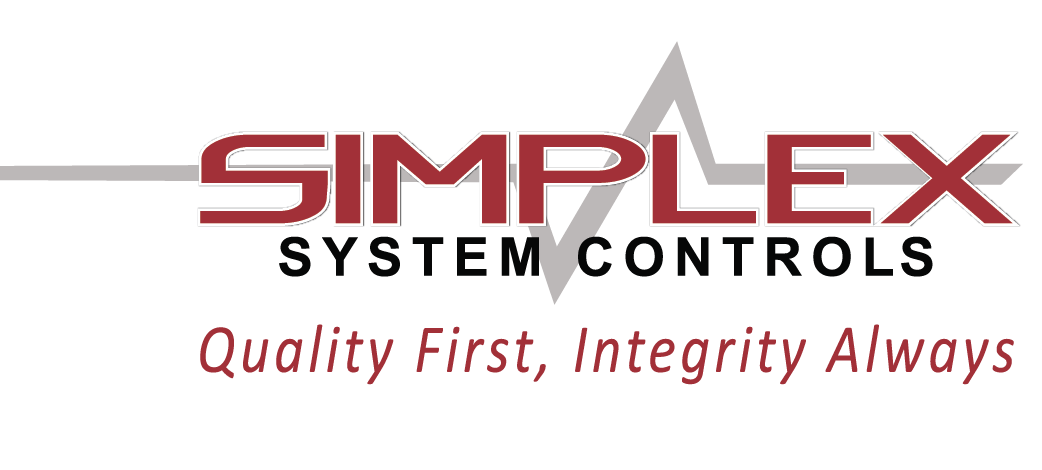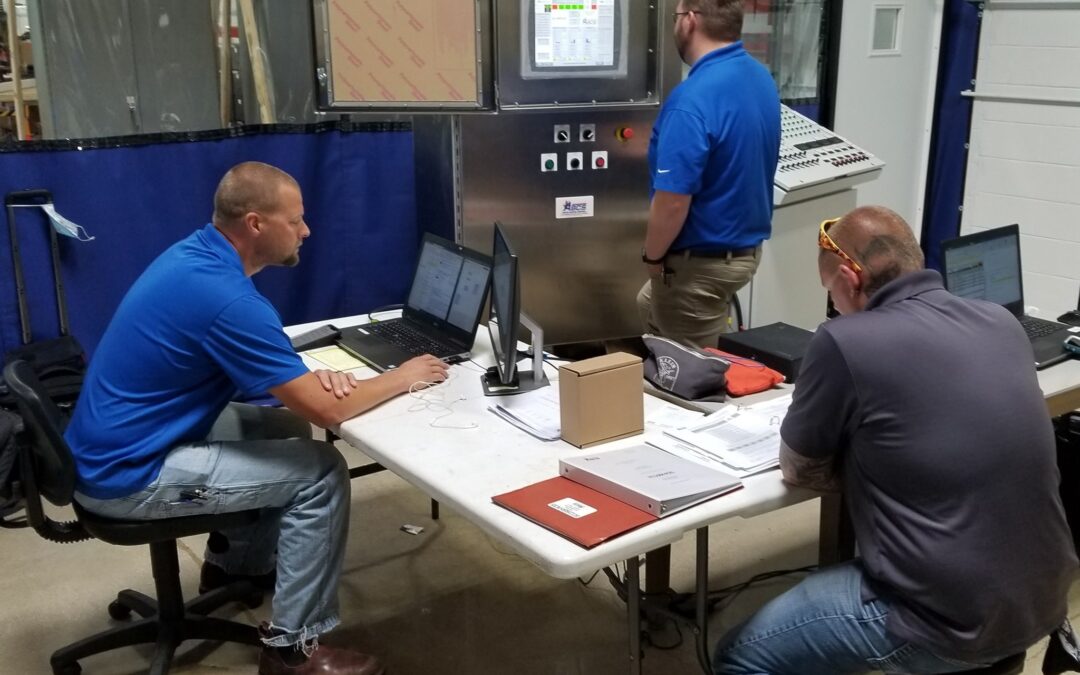In the manufacture of control panels nothing should be taken for granted. To build a high-quality panel the design, components, layout, wiring, labeling, and the enclosure must all be carefully planned, selected, and combined to meet exacting standards.
The design and construction of panels should comply with all relevant industry codes and best practices including NEMA, IEC, NEC, and/or NFPA. Panels produced by suppliers that employ quality management and control processes, such as those embodied in the Six Sigma framework or ISO9000 further help to ensure a high level of quality.
The Importance of Factory Acceptance Testing
Work does not end once a panel is built, however. The importance of testing a panel before it leaves the shop should not be overlooked. Testing procedures ensure that a panel is constructed as designed and works as intended.
Before a control panel leaves Simplex, for example, it is put through a rigorous quality control and testing process:
- The bill of materials is cross-checked against the project requirements.
- Each component is reviewed to ensure it meets the voltage requirements and the rating of each component is verified to meet the anticipated field requirements including hazardous locations if required.
- Wire connections are individually inspected to make sure there are no loose strands. All high power (greater than 120V) are torqued to manufacturer ratings. If the panel is being UL Listed, all connections are torqued to manufacturer ratings with calibrated equipment.
- To facilitate ease of installation for the end-user, the accuracy and proper placement of labels is verified.
- The panel is powered up. One by one, each wire is powered, components are turned on, and proper hardware functioning is confirmed. If a Programmable Logic Controller (PLC) is specified, the inspector will connect a laptop and enter a base level hardware configuration to test every input and trigger every output – whether digital or analog.
At Simplex, our goal is a “clean install” and helping our customers contain the total cost of commissioning. That is why, in addition to our standard testing protocol, we also offer Factory Acceptance Testing (FAT) upon request.
Customers appreciate the added assurance that a FAT provides. FAT’s further help to validate that a panel will work correctly once it is placed in the field – eliminating the need for expensive on-site changes or repairs.
How FAT Works
As the name implies, FAT’s are done at the shop before the panel is shipped to the customer and involve both the manufacturer and customer representatives.
The manufacturer and customer can choose whomever they would like from their companies to be present during the FAT. Those present may include project managers, engineers, operators and/or testing or maintenance personnel.
FATs are beneficial for both parties and is a valuable opportunity that should not be overlooked. Rectifying issues while the panel is still at the shop helps to keep the project on track and within budget. FAT’s almost always save time and money over fixing issues in the field. While there are some general guidelines for FATs, each FAT is a customized procedure. The complexity of the FAT performed is generally determined by factors such as the degree of customization, familiarity with equipment, the degree of integration, and the specific needs of the customer or end user.
At a minimum, FAT will include:
- A comprehensive inspection including conformity checks and verification that the panel meets the original design specifications.
- Contract audit—this consists of a review of the original agreement to make sure all contractual obligations have been met.
- Setting confirmation-this consists of checking to make sure all IP or VFD settings, as well as any others provided by the customer before the FAT, are correct or they can be entered during the FAT.
- Functional test—this procedure simulates operation to provide proof of functionality and includes custom software being loaded into the PLC.
- Review and verification of user manuals and any instructions that come with the installed equipment to make sure they are accurate.
The process for a successful Factory Acceptance Test involves planning, performing test activities, documenting the results, correcting issues (if any are found), and signing-off.
The importance of the planning phase cannot be stressed enough. To ensure a successful FAT it is important to communicate effectively throughout the process and set clear expectations before the test is conducted. Both parties should delineate the scope of testing, the applicable standards, and the testing equipment that will be used.
Quality First, Integrity Always
At Simplex, Factory Acceptance Testing is just one of the ways we add value for our customers. We are proud to say that thanks to our relentless focus on quality and rigorous testing procedures (including Factory Acceptance Testing) our control panels have no commissioning issues in the field.
Be next to share your story supporting innovation, quality, or integrity.
Companies nationwide rely on Simplex for high quality control panels. Learn more here or call us at (630) 766-8401.
Manufacturers Simplex System Controls’ Blog is looking to hear from you.
Be next to share your story supporting innovation, quality, or integrity.
If you are an engineer, engineering firm, one of our vendors, or manufacturer and want to collaborate on an article or have an industry story to share, contact our sales and marketing team. Also, reach out if you have strong opinions on this article.
Contact:
Ron Rytlewski, [email protected]
(630) 766-8401

